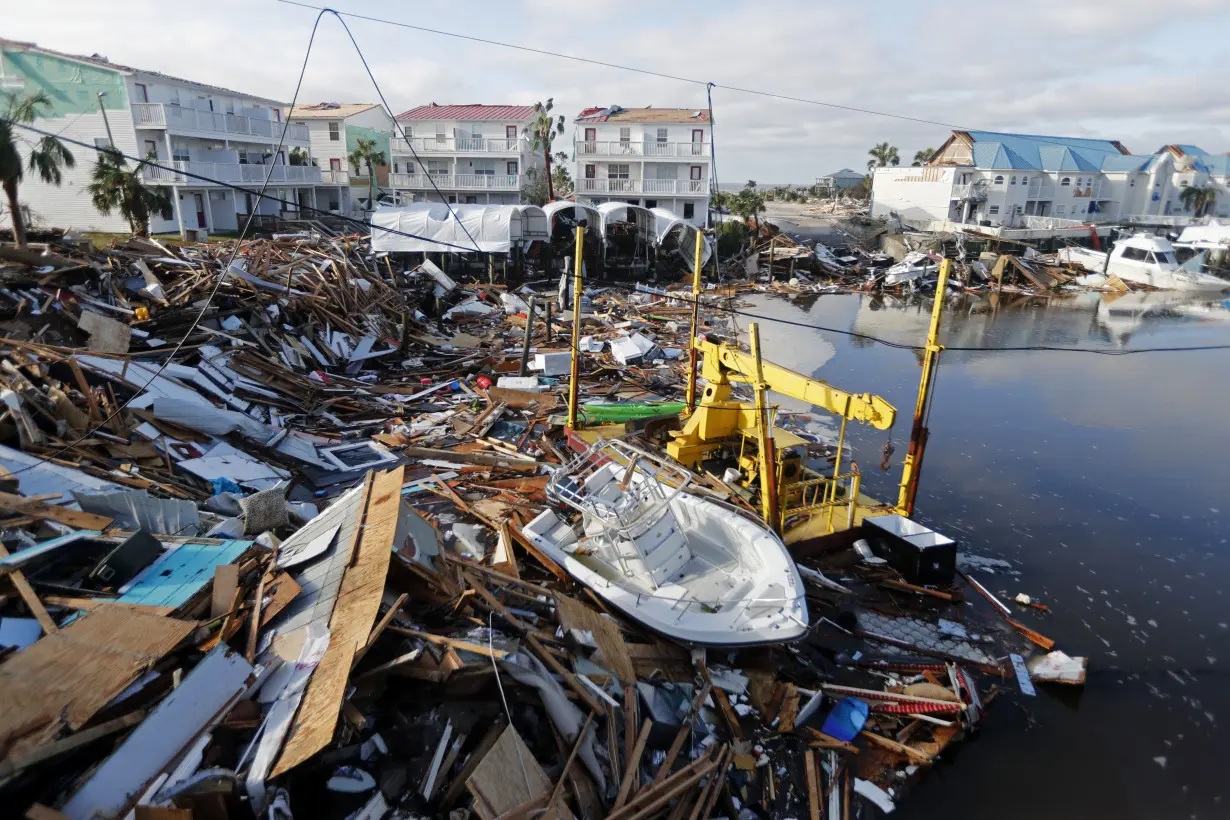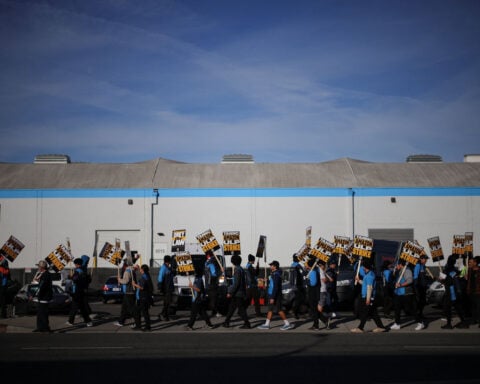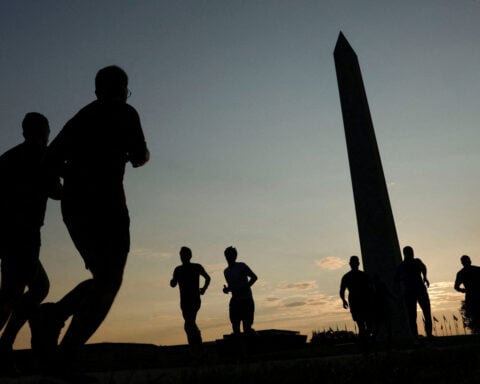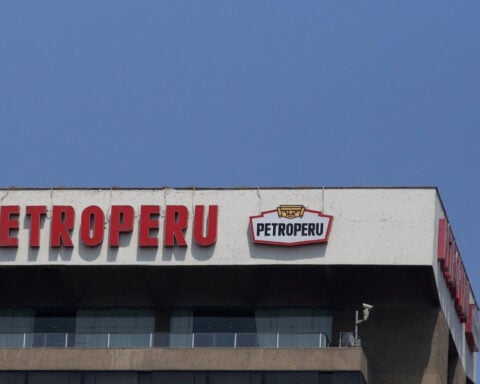WASHINGTON (AP) — Anyone who has lived through a natural disaster and then applied to the federal government for assistance knows that it can be a lengthy, frustrating and bureaucratic process. New rules announced Friday by the federal agency in charge of emergency management aim to simplify and speed up the process.
With natural disasters now affecting more people across the United States, insurance markets in many states are buckling under the weight of payouts to those hit by wildfires and hurricanes.
Deanne Criswell, who heads the Federal Emergency Management Agency, said the changes, going into effect in March, are designed to make it easier for disaster survivors to get help — a challenge for those often struggling to recover from the worst day of their lives.
“Mother Nature is not letting up,” Criswell said to reporters on a call announcing the changes. “We need to be better prepared and better informed to recover from natural disasters faster and more effectively.”
Criswell described the changes as the “most comprehensive update to our individual assistance program in 20 years.” She said the changes were the result of a huge amount of feedback from survivors, organizations that work in disaster recovery, and elected officials.
Here are some of the changes outlined by FEMA:
Under previous rules, homeowners who had received payments from their insurance company for home repairs but not enough to cover all of the damage were essentially out of luck when it came to getting help from FEMA. Now those homeowners can apply to FEMA for help. Criswell gave an example of a homeowner who has $80,000 in damage but receives only $45,000 from the insurance company. Previously, FEMA couldn't help them because their insurance payout already exceeded the agency's assistance cap of $42,500 per disaster. Now, that homeowner can get money from the agency to make up the difference. This rule change comes at a time when homeowners in places like Louisiana, Florida and California are facing skyrocketing deductibles and fights with insurance companies over damage assessments that have made it difficult even for people with insurance to recover from hurricanes or wildfires.
Samantha L. Montano, an assistant professor of emergency management at the Massachusetts Maritime Academy, called this change a “pretty massive internal shift” and questioned why it hadn't been done before. She said survivors are increasingly receiving estimates from insurance companies that are much lower than the cost of repairs or inspectors saying that the damage was pre-existing and as such not covered. That leaves homeowners increasingly in the position that they have to sue their insurance company or figure out how to make up the difference on their own.
Under previous rules, disaster survivors first had to apply for a loan with the Small Business Administration and get rejected before they could apply for FEMA assistance. Criswell said survivors found the SBA application requirement “confusing and challenging,” so the agency is eliminating that requirement.
Al Cathey, who was mayor of Mexico Beach, Florida, when Hurricane Michael leveled almost every building in the Panhandle beach town in 2018, said he welcomed the changes given the bureaucracy and paperwork he encountered when he went to apply for an SBA loan for his destroyed hardware store.
After going to a trailer where SBA workers handed him a large packet of papers, and seeing how many people he would have to be interviewed by to get the loan, he decided it wasn’t worth it even though he was about $200,000 short of the money needed to reopen the store.
“I got frustrated with them myself. I didn’t want to get involved with all that government red tape,” Cathey said Friday. “I understand the need for guidelines and policies, but, my God, the paperwork they wanted from me to start the approval process. This was a disaster, but you would think they thought I wanted the money for a vacation.”
The agency has had something called critical needs assistance, currently $750, that survivors can use for whatever they need right after a disaster: baby formula or food, for example. But states or tribal nations had to specifically request that category of assistance, and it was only done on a case-by-case basis. Now, anytime a disaster is declared that includes FEMA's individual assistance funding stream, those $750 payments will be available. Survivors still have to apply, and there is some vetting to prevent fraud. But it bypasses the application that states and tribal nations had to make. That doesn't mean that every disaster will include these payments. Many declared disasters are more limited in scope.
Disaster survivors with disabilities can use FEMA money to make changes to their homes to make them more accessible, whereas under previous rules the agency would only pay to rebuild things that had been damaged in the disaster. People with pre-existing problems in their home, like a leaky roof, can now get money from the agency to fix the house. Currently, the agency requires that if it is giving people money to fix something, it had to have worked before the disaster.
And FEMA is creating a new category of aid called displacement assistance, designed to help those who can't return to their home. It gives them money for housing while they’re looking for a long-term rental and has flexibility so that they can, for example, use the money to pay a friend’s utilities if they’re crashing on a couch.
Zack Rosenburg, the co-founder and CEO of St. Bernard Project, which does recovery work across the country, said the changes are a “step in the right direction.” He said the vast majority of people their organization works with in the wake of natural disasters “hate” asking the government for help.
“For some, they see it as humiliating. For some, they see it as anathema or inconsistent in who they are. They just don’t like doing it,” he said.
And then when they do, they encounter a “maze” of requests for information.
He particularly praised the changes getting rid of the mandatory SBA application, efforts to simplify the application process and the changes allowing FEMA money even if people had preexisting problems with their homes: “This will allow more resilient rebuilding.”
But, he said, the details of how the changes are communicated to people will be crucial, and he suggested other things that would help such as making the changes retroactive to people who already have claims in the pipeline. He said the SBP has also been pushing for years for one application that can be used to apply for FEMA, SBA and the Department of Housing and Urban Development, which funds longer-term recoveries.
Overall, Montano said, these are all “good and needed changes, but we still need to do more.” Like any new government policy, it depends on how things play out once the policies go into effect. And, she said, there's likely still room to improve things like the appeal process or giving survivors more time to apply for aid. And, she noted, FEMA is one part — albeit an important part — of disaster recovery. She said Congress needs to step in to increase the cap on individual assistance to disaster survivors and there needs to be more oversight of the insurance industry.
The new rules go into effect March 22. The changes are expected to cost $671 million per year, with $159 million of that borne by the states and tribal nations where the disasters occur.
___
Associated Press writer Mike Schneider contributed from Orlando, Fla.
___
Follow the AP's coverage of the Federal Emergency Management Agency at https://apnews.com/hub/federal-emergency-management-agency.

 Israeli attorney general orders probe into report that alleged Netanyahu's wife harassed opponents
Israeli attorney general orders probe into report that alleged Netanyahu's wife harassed opponents
 Peru declares environmental emergency after oil spill
Peru declares environmental emergency after oil spill
 The strike against Amazon is over but Teamsters warn: ‘Stay tuned’
The strike against Amazon is over but Teamsters warn: ‘Stay tuned’
 Bad Bunny announces a new album, 'Debí Tirar Más Fotos'
Bad Bunny announces a new album, 'Debí Tirar Más Fotos'
 Column-Why US Congress restored Social Security benefits for public-sector retirees: Mark Miller
Column-Why US Congress restored Social Security benefits for public-sector retirees: Mark Miller
 Pat Riley says the Miami Heat will not trade Jimmy Butler
Pat Riley says the Miami Heat will not trade Jimmy Butler
 ‘Wicked’ will make its streaming debut on New Year’s Eve, with deleted and extended scenes
‘Wicked’ will make its streaming debut on New Year’s Eve, with deleted and extended scenes








